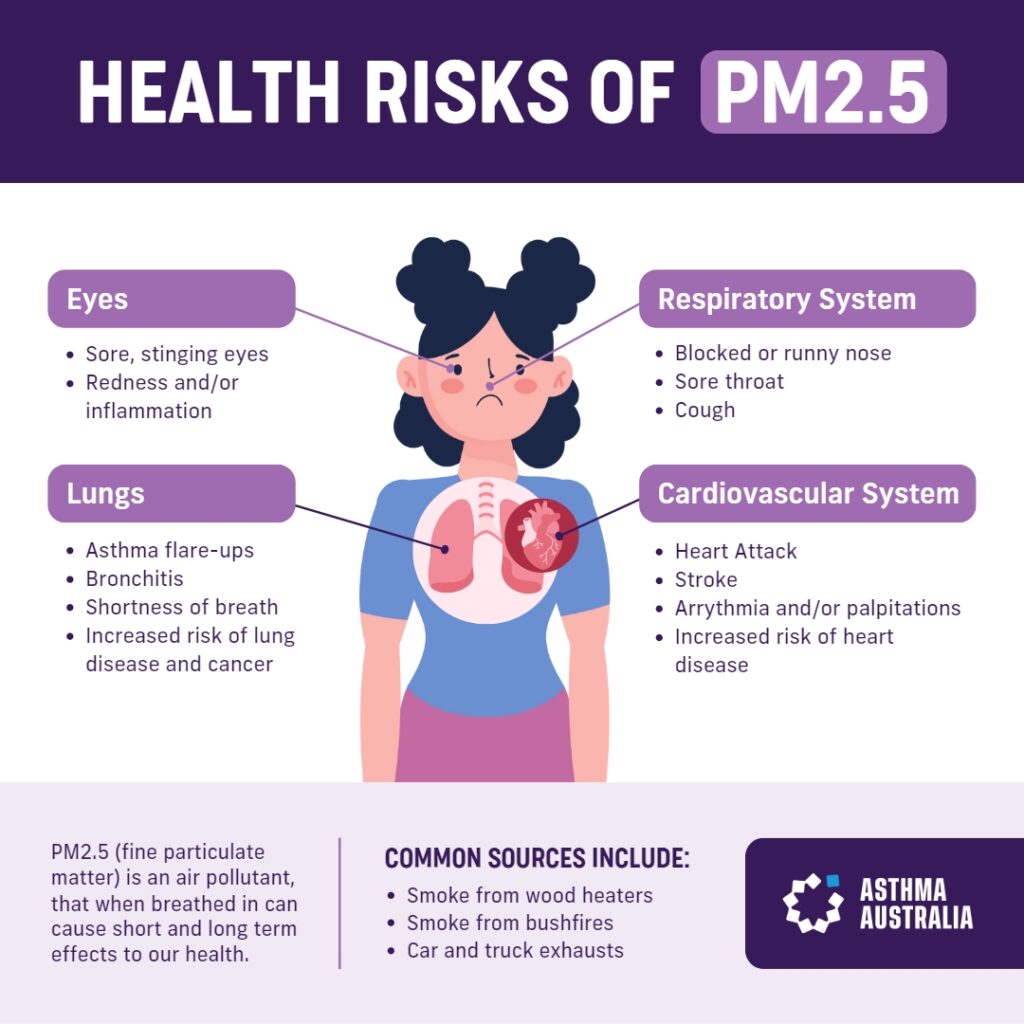Did you know air pollution isn’t just one thing? It’s a complex mix of gases and particles that can seriously impact our health and environment.
One harmful type of air pollution is particulate matter, such as PM2.5 and PM10. When we breathe in, these tiny particles can easily enter our lungs and cause health problems.
How is air quality measured?
Air Quality Categories are measurements of key air pollutants monitored over relevant periods of time (from 1 to 8 hours depending on the pollutant) including:
PM 2.5
The most concerning air pollutant is PM2.5. PM2.5 is “fine particulate matter”. These are very small bits in the air made up of different things, like chemical compounds, combustion materials and sea spray. They can come from things like car engines, bushfires and wood heaters. Because these particles are so small, they can get deep into your lungs and hurt your heart and lungs.

PM10
PM10, or coarse particulate matter, is a term for small particles made up of different things, like chemical compounds, combustion products and pollen. It can be from burning things, like campfires and wood heaters, or by dust from many places. Particles can get into the upper airways and hurt your lungs. They can also irritate your eyes and nose.
Ozone
Ground level ozone is made by a chemical reaction between heat, sunlight and pollutants often found in cars and factories. Ozone levels are higher during summer.
Sulfur Dioxide
Sulfur dioxide, or SO2, is a colourless gas with a strong pungent smell. It is typically produced by industrial sources such as coal-fired power plants. It can damage lunge health and cause breathing difficulties, particularly for people with asthma.
Carbon Monoxide
Carbon monoxide, known as CO, is a colourless and odourless gas. It is produced by burning processes, for example, combustion vehicle engines and gas cooktops. CO is most dangerous indoors where it can build up to levels high enough to cause dizziness, unconsciousness and death.
Nitrogen Dioxide
Nitrogen dioxide, known as NO2, is a gas produced by burning fossil fuels like gas, petrol and coal. Breathing in NO2 can trigger asthma symptoms and increase the risk of developing asthma. NO2 is a component of ground-level ozone and can be found in particulate matter.





 1800 278 462
1800 278 462




